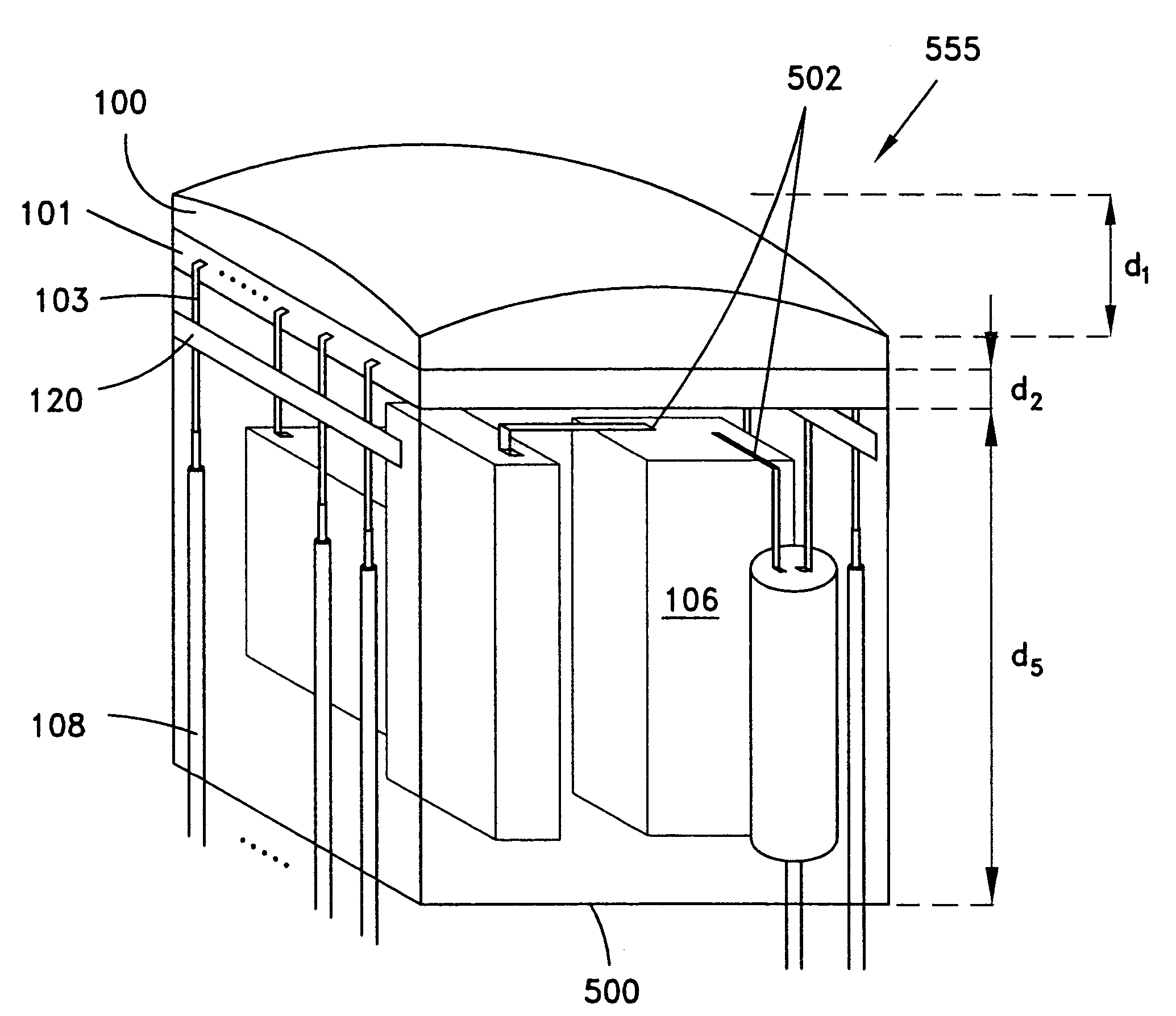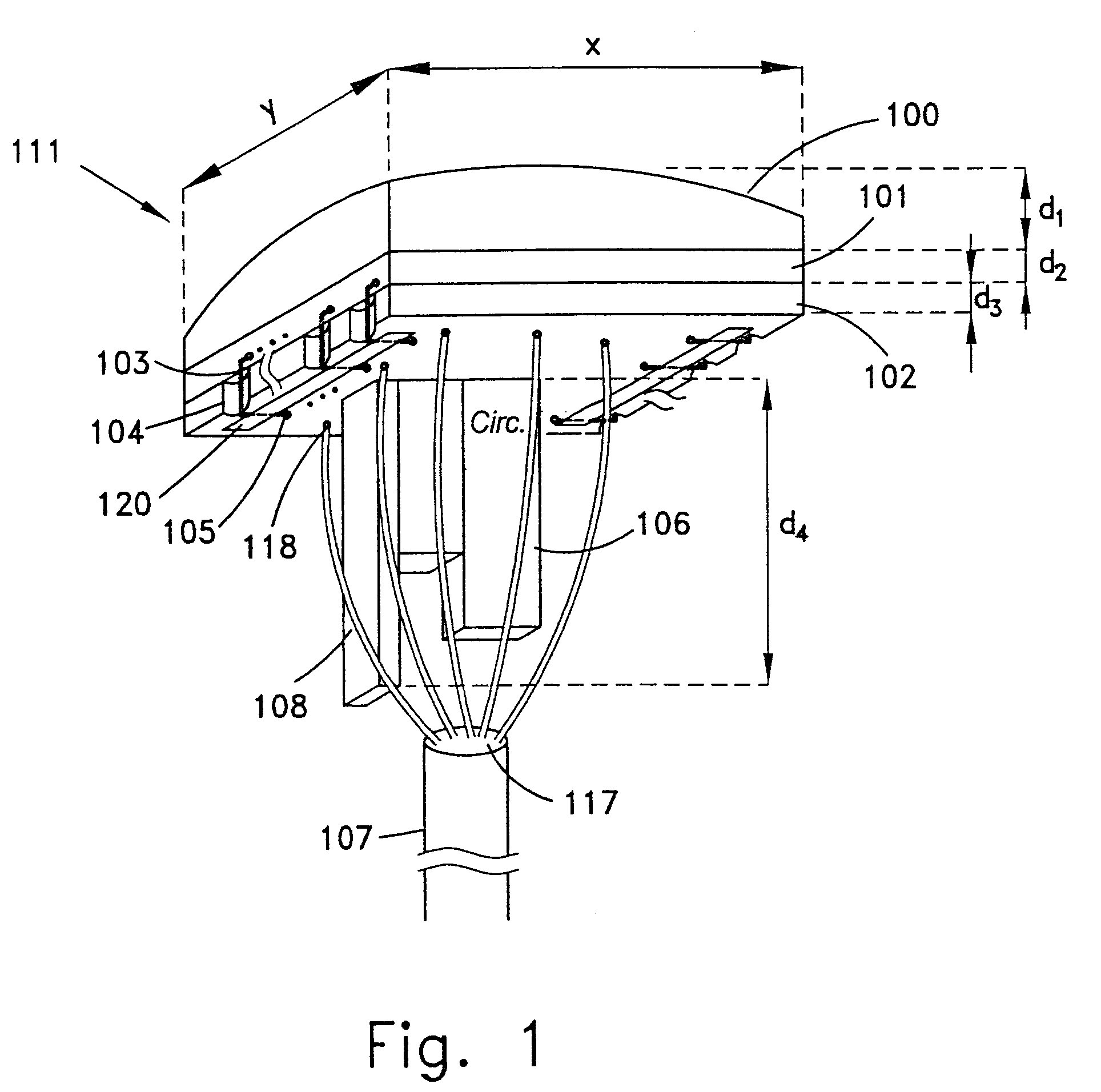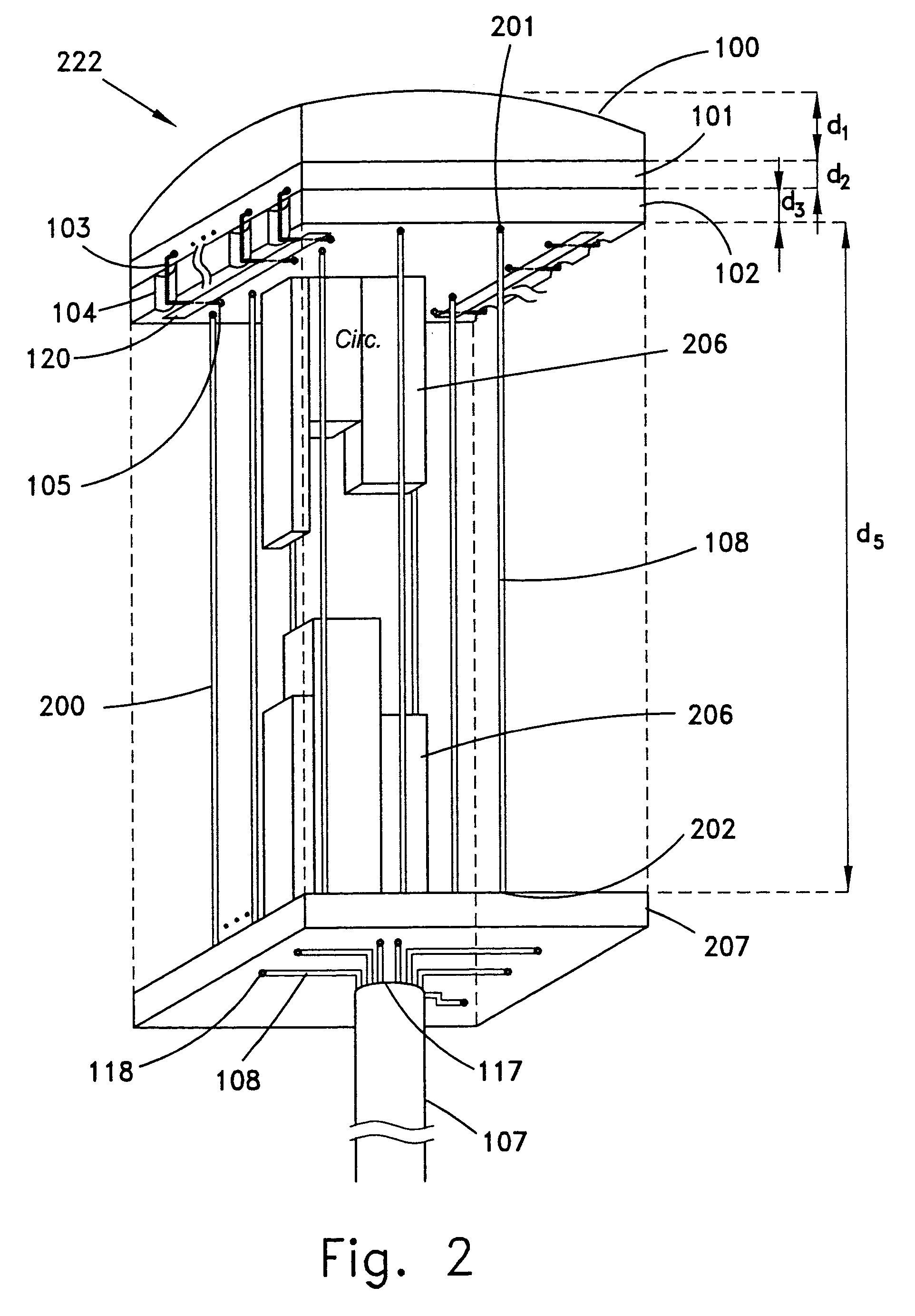Autoclavable imager assembly
an imager and autoclavable technology, applied in the field of endoscopy and imaging systems, can solve the problems of loss of transparency, affecting the performance of the inability to directly see the operating field by the person carrying out the operation, so as to improve the image quality and the dynamic response
- Summary
- Abstract
- Description
- Claims
- Application Information
AI Technical Summary
Benefits of technology
Problems solved by technology
Method used
Image
Examples
Embodiment Construction
[0060]The present invention provides an autoclavable imager assembly, having minimal size, which functions as a miniature camera head. The camera head of the invention comprises an imaging sensor, such as CCD, to acquire the images and the components required to process and amplify the attained signals and to deliver them via conductive wires to a display system that digitally processes the attained signals. As explained hereinbelow, the quality of the image is greatly dependent on the number of electrical components that are mounted in the vicinity of the imager, to improve the signal quality. Electronic improvement is necessary because the signals that are transmitted via the conductive wires to the display system are distorted and attenuated by electrical noise and because of the presence of various other electrical effects, e.g., electrical resistance, along the conductive wires. The quality of the image also depends on many other factors including, but not limited to: the numbe...
PUM
 Login to View More
Login to View More Abstract
Description
Claims
Application Information
 Login to View More
Login to View More - R&D
- Intellectual Property
- Life Sciences
- Materials
- Tech Scout
- Unparalleled Data Quality
- Higher Quality Content
- 60% Fewer Hallucinations
Browse by: Latest US Patents, China's latest patents, Technical Efficacy Thesaurus, Application Domain, Technology Topic, Popular Technical Reports.
© 2025 PatSnap. All rights reserved.Legal|Privacy policy|Modern Slavery Act Transparency Statement|Sitemap|About US| Contact US: help@patsnap.com



